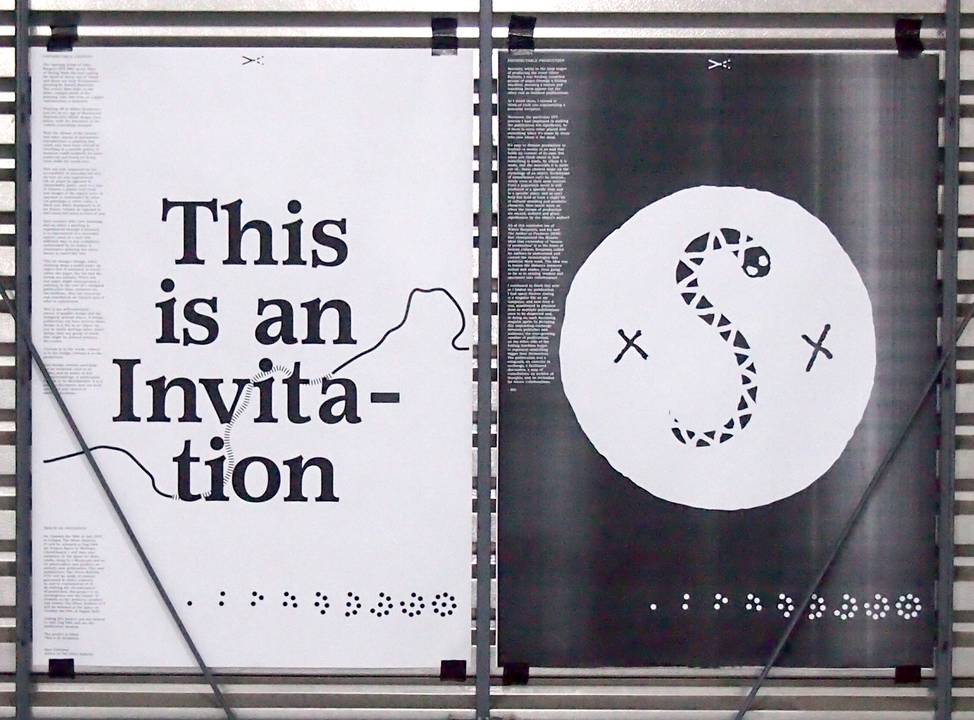Distributable Content
This text was originally printed on the white side of a double sided poster I produced in association with The Silver Bulletin project This is an Invitation at Dog Park Art Project Space in Waltham, Christchurch.

The opening scene of John Berger’s 1972 BBC series Ways of Seeing finds the host cutting the head of Venus out of Venus and Mars - an early Renaissance painting by Sandro Botticelli. The screen then fades to the same, cropped detail of the painting, only this time, as a paper reproduction—a postcard.
Working off of Walter Benjamin’s text Art in the Age of Mechanical Reproduction (1936), Berger then states: ‘with the invention of the camera everything changed.’
With the advent of the camera—and other means of mechanical reproduction—a painting that could only have been viewed by traveling to a specific gallery or museum could suddenly be mass-produced and found on living room walls the world over.
This not only impacted on the accessibility of artworks, but also on how art was experienced: ink on paper as opposed to untouchable paint... next to a vase of flowers, a plastic wall clock and images of the nightly news as opposed to surrounded by same era paintings or white walls... a black and white thumbnail in an art history volume as opposed to full colour, full sized, in front of you.
New contexts infer new meanings and so, when a painting is experienced through a postcard, it is experienced as a secondary source—seen in a new and different way—a way completely unintended by its maker. A renaissance painting was never meant to travel like this.
This all changes though, when thinking about a publication—an object that IS intended to travel—where the paper, the ink and the format are primary. While ink and paper might misrepresent a painting, in the case of a designed publication these elements are the medium... they are necessary and considered, an integral part of what is represented.
This is the self-referential nature of graphic design and the designed, printed object. A design publication can have articles about design in it but as an object say just as much, perhaps more, about design than any group of words that might be printed between the covers.
Content is in the words, content is in the design, content is in the production. And though content can’t help but be localised—tied to its maker, and its maker to his/her surroundings—a publication intends to be distributable. It is a primary document, sent out from one place and viewed in multiple locations.